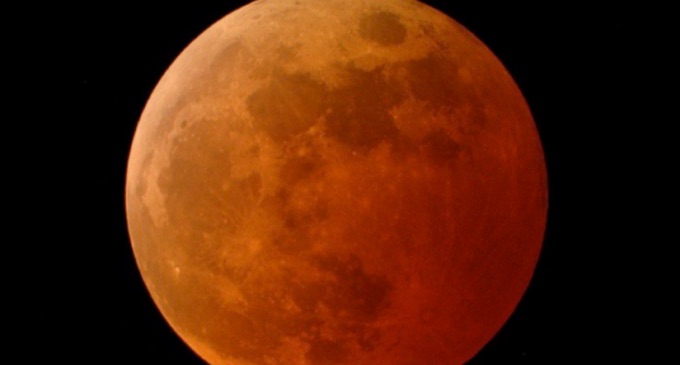
The longest total lunar eclipse of this century would be visible from all parts of India on July 27. The celestial body would also be tinged with a reddish hue, a phenomenon popularly referred to as a ‘blood moon’.
Director, Research and Academic, MP Birla Institute of Fundamental Research, MP Birla Planetarium, Debiprosad Duari told news agency PTI, “Viewers in India are lucky since the eclipse, both partial and the total, will be entirely visible from all parts of the country.”
The eclipse would also be visible in parts of South America, much of Africa, the Middle East and Central Asia, he said.
The total lunar eclipse would last for one hour and 43 minutes while partial eclipses, which would precede and follow the total eclipse, would last more than an hour, he said.
The partial eclipse of the moon would start at 11:54 pm Indian Standard Time on July 27 and the total eclipse would begin at 1 am on July 28, Duari said.
The scientist said that at 1.52 am on July 28, the moon would look the darkest and it would continue till 2:43 am.
“After this period, the moon will remain partially eclipsed till 3:49 am of July 28. It will be a golden opportunity for celestial enthusiasts in India as the eclipse will be visible almost throughout the night,” he said.
During the July 27 total lunar eclipse, the moon has to pass through the central part of the Earth’s shadow.
But on July 27 late night, the Full Moon would be near its apogee, the farthest point from the Earth in its orbit around the Earth, and it would be the smallest full moon of the year.
“This smaller and slower-moving full moon takes more time to cross the Earth’s shadow than does a full moon that is closer to Earth and moving faster in orbit. That is why a full moon at or near lunar apogee adds to the duration of a total lunar eclipse,” Duari said.
The full moon would plunge deeply into the Earth’s shadow on the night of July 27-28 when the distance of the Moon from the Earth just before the eclipse would be around 406,223 kilometre, he said.
During a total lunar eclipse, the Moon’s disk can take on a dramatically colourful appearance from bright orange to blood red and more rarely dark brown to very dark gray, depending upon the part of the Earth’s shadow it would be passing through.
This was the reason a totally eclipsed Moon, at times, was called as Blood Moon.
Explaining the celestial phenomenon, Duari said a lunar eclipse takes place only at full moon.
“Whenever, the Sun, Earth and Moon come in a perfect straight line, as the Sun’s rays falls on the Earth, the Earth’s shadow falls onto a patch of space, and only when, the Moon enters that patch of shadow, we see a lunar eclipse,” he said.
Describing 2018, as an year of lunar eclipses, Duari said the last total lunar eclipse took place earlier this year on January 31.
“It was widely known as Super Blue Blood Moon as it was a so-called supermoon, when a Moon appears extra big and bright being closest to the Earth in its elliptical orbit. A Blue Moon is the second full moon during a calendar month,” he said.
“The next total lunar eclipse on January 21, 2019, will be only for one hour and two minutes because it will pass to the north of the shadow’s centre,” Duari added.
On whether, it will be safe to view the lunar eclipses with naked eyes, Duari said, “No special filters are required to protect our eyes like those used for watching solar eclipses. One does not need a telescope to watch the eclipse, though a good pair of binoculars will enhance the experience.”













